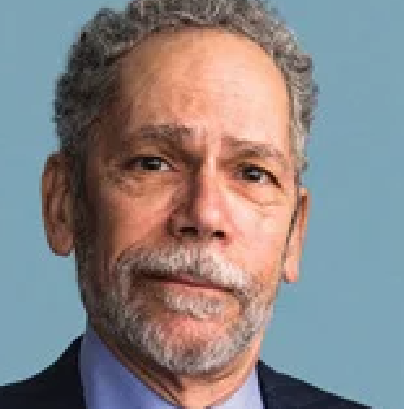Beneath the Surface: Market Volatility Remains

January was not a kind month for bonds. On the surface, all was well. LGIP rates were largely static in the month and the yield on the two-year Treasury—a good bell weather for separately managed public funds portfolios—ended the month not much above where it started. But beneath the surface heightened volatility prevailed.
There is a simple measure of volatility: the difference between the high and low yields within a trading day. In January, the yield on two-year Treasuries moved more than ten basis points on nearly half (ten out of 21) of the trading days. When yields on securities you might buy or sell move ten basis points or more between morning coffee and afternoon tea it creates uncertainty.
For a more sophisticated measure there is the Move Index, shown below.

It measures volatility across the bond market by tracking common instruments (options on intertest rate swaps) of varying tenors. The index reached stratospheric levels during market crises—the Covid lockdown in 2020 and the banking crisis last spring. It is well off from these highs but is notably above “normal.” Or is this the new normal? Time will tell.
Why it matters. Volatility does not necessarily impact returns. Imagine a two-year Treasury that began the month with a 4% yield, dropped in price during the month to yield 5%, then recovered by month-end to be unchanged on the period. The annualized return on this bond for the month would approximate 4%.
In January, the yield on the two-year Treasury rose 11 basis points from the start to the end of the month. As a result, the annualized return on our model portfolio annualized to 4.40%, lower than the dividend yield of a typical LGIP (5.20%-5.40%) but hardly a disaster. (For details see our Dashboard here.)
But unless you are a day trader short-term volatility is not your friend because it injects uncertainty into trading, creates market inefficiencies and raises the cost of buying and selling securities. Brokers who are unsure of where market levels will be in a few hours or minutes will be inclined to add a cushion to the prices of securities they bid and offer. Dealers will be less likely to hold inventory without protecting themselves against price movements. All of this can result in thin markets and wide bid/offered spreads, even for short-term Treasuries.
So far this year the volatility-related effects on the markets have been muted. Bid/offered spreads for Treasuries, which widened notably last spring, fell back in the fall and are now near more normal levels. The cost of buying a six-month Treasury bill (the difference between bid and offered price) is now only around ½ basis point—or about $25 per million. From this spread the dealer has to pay all of their costs, including bank fees, accounting, trading and compliance and capital charges, if any, and also be able to offer the bill back out to a buyer at an attractive price. The economics only work if the market makes no adverse move (i.e. move to higher rates) before the dealer can re-sell the bill. In a volatile market the dealer may have to increase the spread by five or 10 times, meaning the bid/offered spread could be as much as five basis points of yield that the seller would have to give up to liquidate the bill. This is what happened during the volatility spikes in 2020 and last spring.
Another indicator that volatility has yet to impact markets: Corporate treasurers, who would tend to avoid piling into an uncertain market, issued $202 billion of investment grade bonds in January, up from $149 billion in 2023.
Bottom line. Maybe the heightened volatility is a result of early-year exuberance around the possibility (prospect?) that interest rate will soon head lower. If so, it could subside as the path forward becomes a bit clearer. But if not, volatility could inject new instability into the markets in the coming months.
How Corporate Treasurers Address Safety and Liquidity
The failures of Silicon Valley Bank, Signature Bank and First Republic Bank a year ago highlighted the importance of liquidity in managing cash. State and local governments were unscathed by these failures but the same cannot be said for corporate depositors who had vital funds frozen, at least temporarily.
The rescue plans engineered and supported by the Federal Deposit Insurance Corporation ultimately made these depositors whole, but there were at least some delays in drawing cash.
Now comes a strategic risk survey conducted by Strategic Treasurer, with support from Alllspring, that describes how corporate treasurers dealt with liquidity risk in 2023. It offers some interesting perspectives on how these treasurers have and have not changed their perspectives on investing after the bank failures.
Among the findings:
- Corporate treasurers ranked safety (64% said most important) and liquidity (28%) above yield as their priority for short-term investment. No surprise here.
- Most use a combination of money market funds (74%) and bank deposits (73%) for short-term funds. Again, no surprise.
- Somewhat surprising was that 65% reported they started using bank deposits or certificates of deposit in the past year.
But:
- Forty percent reported that they had no investment policy limits on exposure to uninsured bank deposits.
- Thirty percent reported that they do not collect and review total counter-party exposures.
There seems to be a disconnect here. If you keep in mind that corporate deposits are not collateralized, and that the headlines around the Silicon Valley Bank failure were of the “how am I going to make payroll?” nature, should the safe haven be bank deposits?
Safety and liquidity are best protected by diversifying credit and operational risk. Or, as they say, “the eggs were fine in the basket until the handle gave way.”


